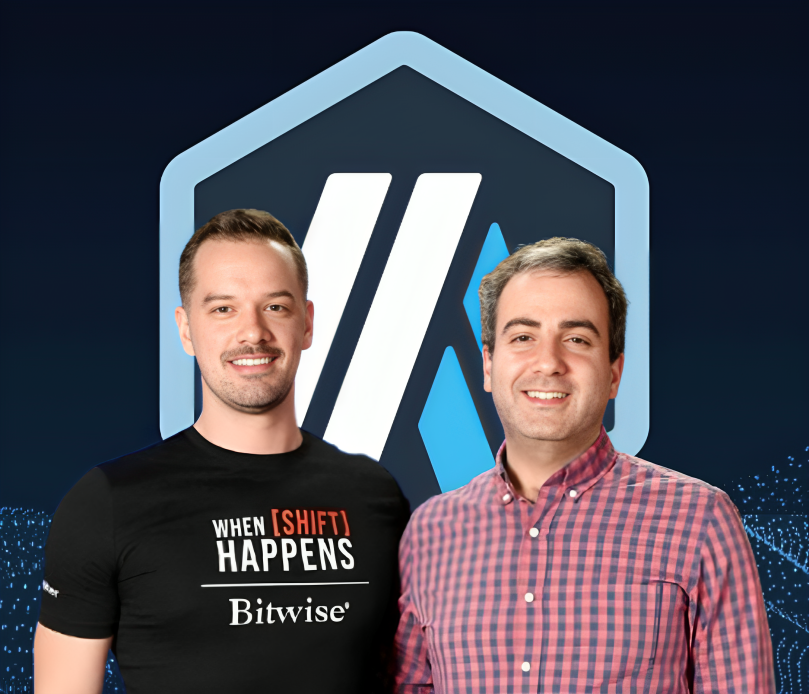I had a fantastic conversation with @KevinWSHPod on everything Arbitrum and the road to get here. Check out the summary and listen below 👇
How Arbitrum 'Fixed' Ethereum's Scalability Crisis — Steven Goldfeder
In the latest episode of When Shift Happens, Kevin Follonier sat down with @sgoldfed , co-founder and CEO of @OffchainLabs, to discuss his unexpected path from cryptography researcher to the creator of one of Ethereum’s most successful Layer 2 solutions, Arbitrum.
In this episode, Steven opens up about the struggles that led to Arbitrum’s creation, the critical lessons learned along the way, and why Ethereum’s success depends on Layer 2 solutions like @arbitrum.
The Early Struggles and the Road to Arbitrum
Steven’s story begins in academia.
As a PhD student at Princeton, he was introduced to the world of Bitcoin and cryptography, and he discovered a passion for digital assets. However, he faced some setbacks. Steven was rejected from a Google internship, a blow that would become a defining moment in his career. In a candid conversation, he shared how this rejection turned out to be a blessing in disguise.
“There’s this pattern of minor failures, but they’re a part of a much larger story. Everything happens for a reason,” Steven reflected.
This moment was a turning point that pushed him deeper into research and, eventually, toward Ethereum. While Bitcoin’s scripting language intrigued him, it was Ethereum’s flexibility in supporting smart contracts that sparked his interest. This discovery led Steven to work alongside his co-founders, @EdFelten and @hkalodner, to create Arbitrum—a scaling solution that would address Ethereum’s congestion and high fees.
Steven discussed the crucial role Ed, his professor, and Harry, his friend, played in the success of Arbitrum. Their collaboration was instrumental, especially in the early days when Arbitrum struggled to find funding and traction. They were speaking about scaling Ethereum at a time when it wasn't yet viewed as a pressing problem, and they had no clear path for branding or explaining their technology. Despite these challenges, the trio pushed forward, believing in the long-term potential of their solution.
Ethereum’s Scaling Problem: Why Arbitrum Matters
One of the key themes of the episode was the challenge of scaling Ethereum to handle the increasing demand for decentralized applications (dApps) and transactions. As Steven explained, Ethereum’s decentralization and security come at the expense of scalability, a dilemma known as the "blockchain trilemma."
“Ethereum focuses heavily on decentralization and security, but scalability is where it falls short,” Steven noted. Arbitrum, a Layer 2 solution, works by processing transactions off the Ethereum mainnet, reducing the computational load and allowing Ethereum to scale effectively. This approach has made Arbitrum the leading Layer 2 solution in the Ethereum ecosystem, with billions of dollars in TVL and hundreds of projects built on it.
Overcoming the Scaling Challenge: Arbitrum’s Unique Approach
Arbitrum’s success can be attributed to its innovative use of "rollups," a technique that batches multiple transactions together before submitting them to the Ethereum blockchain. This process reduces the strain on Ethereum, making it more scalable and cost-effective.
Steven shared how Arbitrum was able to establish itself as a leader in a competitive market of Layer 2 solutions. While other scaling solutions like Plasma and State Channels were being explored, Arbitrum’s rollup technology set it apart. At the time, the industry was focused on Plasma and State Channels, and there was no term to describe the mechanism behind Arbitrum. They struggled to gain traction and to brand the project properly, but the vision eventually paid off.
Decentralization and Governance: The Importance of Community
Steven discussed the importance of decentralized governance and how @arbitrumdao_gov ensures that decision-making is controlled by the community rather than a central authority.
“You can't get me to push any update on the Arbitrum chain, I don’t have the keys,” Steven explained. For any major changes to occur, the Arbitrum token holders vote, and the upgrade itself will be self-executed, i.e, automatic based on the outcome of the vote.
This approach to governance sets Arbitrum apart from other Layer 2 solutions, many of which are still centralized in their control. By creating a decentralized treasury and a governance structure that empowers token holders, Arbitrum is positioning itself as a truly community-driven project.
Arbitrum’s Long-Term Vision
Steven remains optimistic about Arbitrum’s potential and Ethereum’s broader future. He discussed the need for continuous innovation and the importance of keeping Ethereum’s ecosystem open to experimentation and new ideas.
“We want to make sure that Arbitrum continues to push the boundaries of what’s possible,” Steven stated.
Steven also shared his thoughts on Solana, discussing its approach to smart contracts and its potential future impact. While he disagreed with Anatoly Yakovenko's belief that only six smart contracts would matter in the future, he emphasized the importance of diverse and evolving solutions within the blockchain ecosystem. He believes in continuously pushing for innovation and rejecting the notion that the past will determine the future.
In terms of what success looks like for Arbitrum, Steven emphasized that the goal is not just to build a successful Layer 2 solution but to become the default execution environment for Ethereum, and to support the most builders in the ecosystem.
Embracing Failures and Challenging the Status Quo
Steven’s journey is a testament to the power of embracing failure and challenging the status quo. From his early academic setbacks to the decision to leave academia and go all-in on building Arbitrum, Steven’s story is all about the importance of perseverance, adaptability, and vision in the world of blockchain technology.
He wrapped up the conversation with a powerful message for aspiring entrepreneurs and builders: “The best ideas often come from those who challenge the status quo, who look beyond the obvious, and who are willing to embrace failure as part of the journey.”
👉If you enjoyed this summary, head over to YouTube or your favorite podcast app for the full episode and more insights that didn’t make it in here.

26
13.41K
The content on this page is provided by third parties. Unless otherwise stated, OKX is not the author of the cited article(s) and does not claim any copyright in the materials. The content is provided for informational purposes only and does not represent the views of OKX. It is not intended to be an endorsement of any kind and should not be considered investment advice or a solicitation to buy or sell digital assets. To the extent generative AI is utilized to provide summaries or other information, such AI generated content may be inaccurate or inconsistent. Please read the linked article for more details and information. OKX is not responsible for content hosted on third party sites. Digital asset holdings, including stablecoins and NFTs, involve a high degree of risk and can fluctuate greatly. You should carefully consider whether trading or holding digital assets is suitable for you in light of your financial condition.


